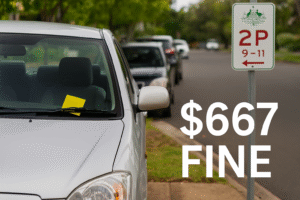This November, most Americans will turn their clocks back one hour as Daylight Saving Time officially ends for the year. Here’s what to expect from the shift.
Why This Matters Now
Every fall, millions of Americans reset their clocks to mark the end of Daylight Saving Time. In 2025, the change happens on Sunday, November 2, when clocks move back one hour at 2:00 a.m. The shift brings brighter mornings but also darker evenings, impacting everything from daily routines to health and safety. While the change may feel routine, its effects ripple through sleep schedules, commuting, and even workplace productivity.
Key Details
| Event | Date | Impact |
|---|---|---|
| End of Daylight Saving Time | Sunday, November 2, 2025 | Clocks move back one hour |
| Time Adjustment | 2:00 a.m. → 1:00 a.m. | Sunrise arrives earlier; sunset occurs sooner |
| Exceptions | Arizona, Hawaii, and U.S. territories | No clock change |
What’s Changing
On November 2, clocks in most U.S. states will shift back an hour, signaling the start of Standard Time. Morning commuters will benefit from earlier daylight, but evenings will become noticeably darker. For states that do not observe Daylight Saving Time, such as Arizona and Hawaii, the change will go unnoticed. This biannual ritual continues despite ongoing debate about whether clock changes are still necessary in modern society.
Impact on Daily Life
The extra hour of sleep that comes with the fall change is welcomed by many, but adjusting to earlier sunsets can be disruptive. Parents often find that children’s sleep schedules are affected, while adults may feel sluggish as their bodies adapt. The darker evenings also have safety implications, with studies showing an increase in evening car accidents following the transition. Businesses tied to outdoor activities may feel the pinch, while early morning industries benefit from brighter starts.
The Debate
Opponents of the twice-yearly clock change argue that it is outdated and harmful to public health, linking it to sleep disruption and accidents. Supporters of Daylight Saving Time say longer summer evenings boost outdoor activity, energy savings, and retail spending. Lawmakers have repeatedly proposed making one system permanent—either Standard Time or Daylight Saving Time—but so far, no national agreement has been reached. For now, Americans will keep turning their clocks forward each spring and back each fall.
Frequently Asked Questions
When do clocks change in 2025?
Clocks move back one hour at 2:00 a.m. on Sunday, November 2.
Does every state follow this rule?
No. Arizona, Hawaii, and most U.S. territories do not observe Daylight Saving Time.
What effect does the change have on sunrise and sunset?
Sunrise comes earlier in the morning, but sunsets happen sooner in the evening.
Will my phone or computer update automatically?
Yes, most digital devices update automatically. Manual clocks, however, will need to be adjusted by hand.
Is this the last time clocks will change?
Not yet. Although proposals to end the practice exist, no permanent law has been passed.




